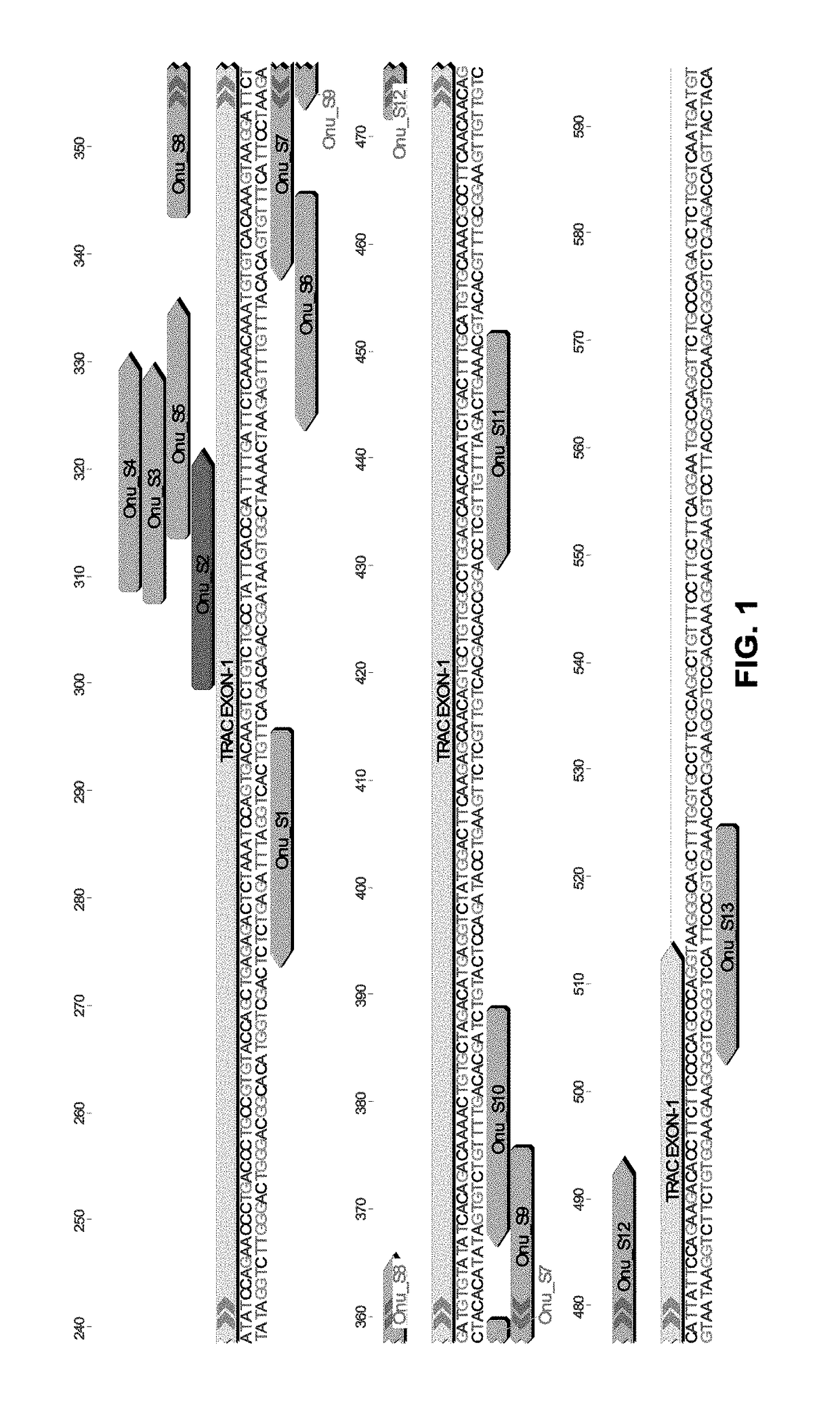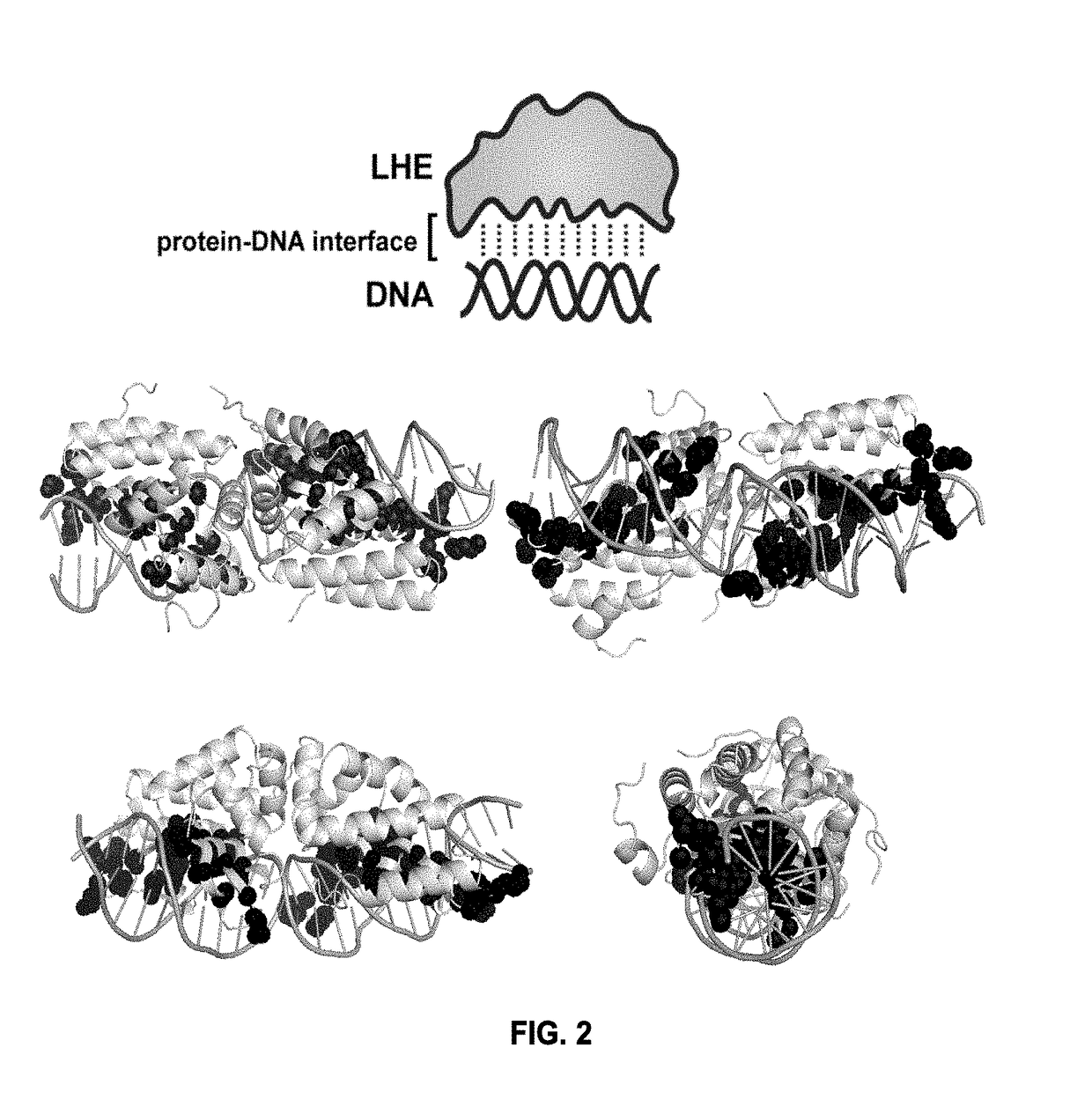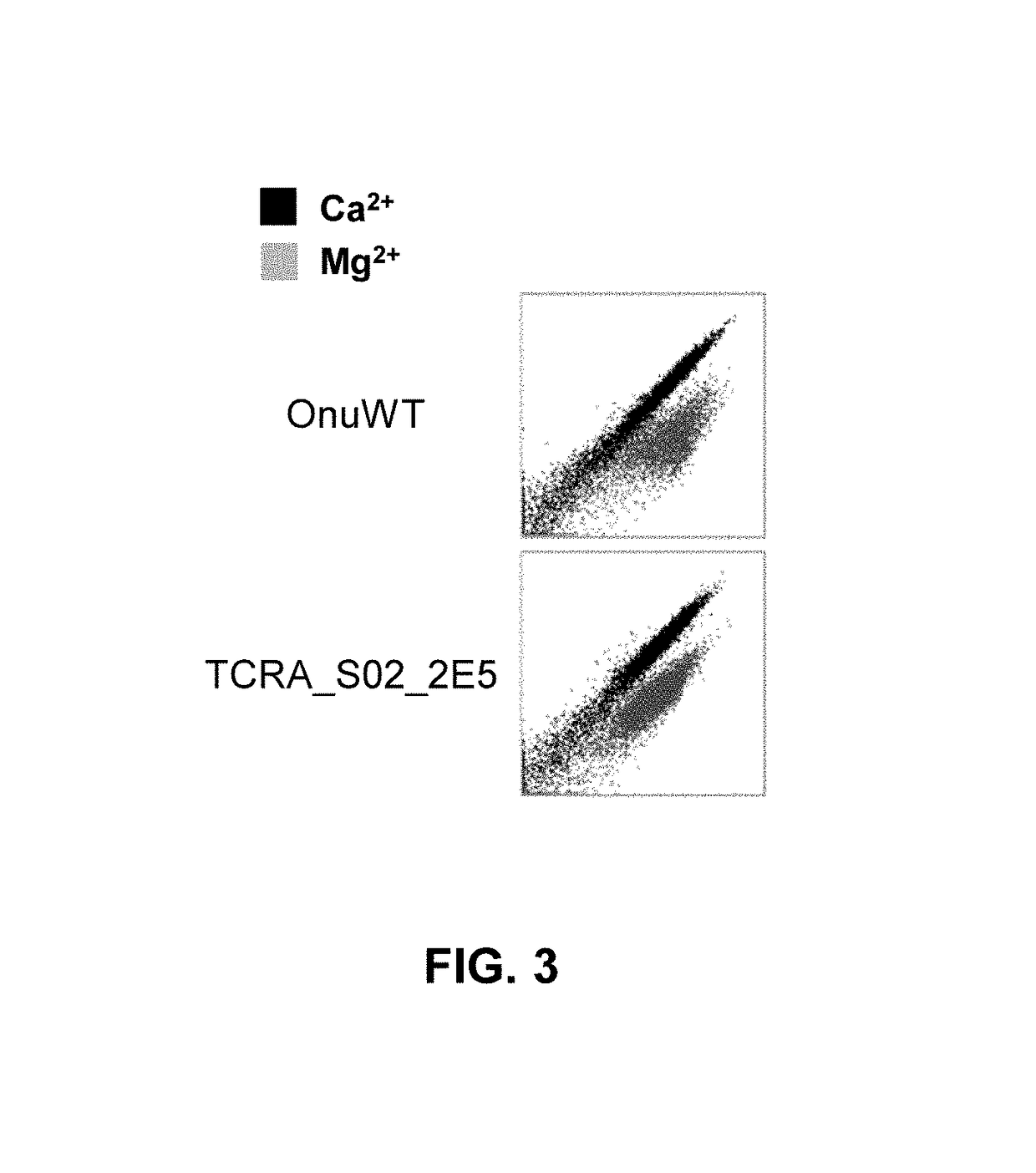LAGLIDADG homing endonuclease cleaving the T cell receptor alpha gene and uses thereof
a technology of laglidadg and endonuclease, which is applied in the field of molecular and cellular biology, genetics, genomics, etc., can solve the problems of not having substantial overall success, preventing efficient methods for re-addressing lhes to dna target sequences, and changing the dna sequence at the site of double strand break, etc., to achieve high efficiency in disrupting expression, improve specificity and efficiency, and improve the effect of efficiency
- Summary
- Abstract
- Description
- Claims
- Application Information
AI Technical Summary
Benefits of technology
Problems solved by technology
Method used
Image
Examples
example 1
ng of LHE Prototypes with DNA Recognition Interfaces Specific for Targets in the Human TRAC Gene was Performed
[0127]Putative LHE target sequences in the human TRAC gene were first identified for which high quality engineered DNA recognition interfaces were predicted by the inventor. Such predictions are based on a series of features intrinsic to the LHE scaffold, I-Onul (SEQ ID NO: 1), upon which the TRAC DNA recognition interfaces were to be engineered. Other considerations, such as locations within the TRAC gene likely to cause significant disruptions to the TCR-alpha protein upon endonuclease-mediated insertions or deletions, and / or the occurrence of adjacent downstream TGA, TAG, or TAA stop codons in alternative reading frames to limit the production of out-of-frame peptides which could serve as the basis for immunological rejection, were also incorporated into the target choice process. See FIG. 1 which schematically illustrates the locations of the putative target sequences.
[0...
example 2
Engineered DNA Recognition Interfaces were Shown to Cause Disruptive Mutations to the Target Sequences for which they were Engineered to Recognize
[0129]To measure the activity of the TCRA targeting LHE, a chromosomally integrated fluorescent reporter system that has been described previously was used. In this system, the LHE of interest is transfected into a HEK 293T fibroblast cell line that is engineered to contain the TCRA_S02 target sequence upstream of an out-of-frame gene encoding the fluorescent protein mCherry. Cleavage of the embedded TCRA_S02 target and subsequent small insertions or deletions caused by DNA repair via the non-homologous end joining (NHEJ) pathway result in approximately 1 out of three repaired loci placing the fluorescent reporter gene ‘in-frame’. Fluorescence in the mCherry channel on a flow cytometer is therefore a surrogate high-throughput readout of LHE cleavage of the chromosomally embedded TCRA_S02 target sequence.
[0130]Initial results with the TCRA_...
example 3
DNA Recognition Interfaces Having High Affinity, High Specificity, and Low Toxicity were Differentiated
[0131]The LHE containing the engineered DNA recognition interfaces for the TCRA_S02 (SEQ ID NO: 3) target was tested for affinity, specificity, and toxicity characteristics. Affinity was tested by independently incubating yeast displaying the TCRA_S02_2E5_RD1_08 variant, (SEQ ID NO: 7, encoding SEQ ID NO: 8) with DNA substrates containing its target sequences at various concentrations. See FIG. 6 showing the affinity properties of this variant relative to the wild-type I-Onul protein. These data demonstrate that the TCRA_S02_2E5_RD1_08 variant binds its DNA target with affinities comparable or higher than that of the interaction between the native I-Onul LHE and its target sequence (SEQ ID NO: 11). Specificity was tested by analyzing the relative affinity and DNA-cleaving ability of the LHE variant towards target sequence containing each of the three alternate DNA base pairs at eac...
PUM
| Property | Measurement | Unit |
|---|---|---|
| time | aaaaa | aaaaa |
| time | aaaaa | aaaaa |
| catalytic activity | aaaaa | aaaaa |
Abstract
Description
Claims
Application Information
 Login to View More
Login to View More - R&D
- Intellectual Property
- Life Sciences
- Materials
- Tech Scout
- Unparalleled Data Quality
- Higher Quality Content
- 60% Fewer Hallucinations
Browse by: Latest US Patents, China's latest patents, Technical Efficacy Thesaurus, Application Domain, Technology Topic, Popular Technical Reports.
© 2025 PatSnap. All rights reserved.Legal|Privacy policy|Modern Slavery Act Transparency Statement|Sitemap|About US| Contact US: help@patsnap.com



